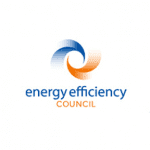Around The Web
Floating farm
Talkback: Whatever the Weather
The majority of people who see poaching in marine parks say nothing
CP Daily: Thursday August 16, 2018
Earliest galaxies found 'on our cosmic doorstep'
NA Markets: WCI prices move up as market ponders auction result
Soaring EU carbon drives fuel-switching, gas price holds key to more
Most-polluting woodburner fuels due to get the chop
Michael Gove plans to phase out house coal to curb harmful emissions
Michael Gove is due to confirm plans to ban the sale of the most-polluting fuels for domestic woodburners in an attempt to cut harmful emissions.
The sale of traditional house coal will be phased out, under proposals set out in the government’s draft clean air strategy in May, and expected to be confirmed by Gove’s department on Friday.
Continue reading...Wheat gene map to help 'feed the world'
EU Market: EUAs dip below €18 following week-long bull run
UK government drops fracking question from public attitude tracker
First fracking operation in seven years set to begin despite low public support
The government has stopped asking the British public whether they are for or against fracking for shale gas just weeks before the first fracking operation in seven years is due to start.
The number of people against extracting shale gas has outweighed those in favour since 2015, and the latest polling by officials found 32% opposed with just 18% in support.
Continue reading...Air pollution: London mayor backs new inquest into girl's asthma death
Khan writes to attorney general over girl who died during spikes in nitrogen dioxide
The mayor of London, Sadiq Khan, has written to the attorney general asking him to back a new inquest into the death of a nine-year-old girl whose severe asthma attacks coincided with spikes in air pollution.
The mother of Ella Kissi-Debrah has fought a long campaign to highlight the role she believes illegal air pollution played in her daughter’s death in 2013.
Continue reading...China set to release guidance on power sector test ETS
US poised to allow more mining on land Trump removed from monuments
Officials plan to sell some of the land that once belonged to Bears Ears and Grand Staircase-Escalante, despite pledge not to
US officials have announced plans to allow increased mining on land that once belonged to two national monuments Donald Trump shrank, and to sell off some of the land despite pledges not to do so.
The two monuments, now significantly smaller in size, are both in Utah. The draft management plan for Grand Staircase-Escalante national monument includes a 98-page minerals report that outlines deposits of coal, oil and gas, tar sands and other minerals under the whole of the monument’s original 1.9m acres.
Continue reading...On patrol with the wildlife rangers of Chinko – photo essay
Rangers in this Central African Republic nature reserve face an array of dangers in their bid to protect a rich variety of species
Deep in the heart of Africa, a dedicated group of rangers patrol the Chinko nature reserve. In baking equatorial heat, they are weighed down with body armour and camouflage fatigues. Beads of sweat run down their faces; mosquitos whine. The men keep watch over a vast patchwork of savanna and rainforest in the Central African Republic – a country mired in civil strife and one of the many frontlines of a poaching war that spans the continent and reaches across the globe.
Continue reading...National Energy Efficiency awards – only 2 weeks left to nominate!
 Presented by the EEC and now in its seventh year running, the National Energy Efficiency Awards are s a fantastic opportunity to be recognised for your efforts and celebrate your commitment to energy efficiency.
Presented by the EEC and now in its seventh year running, the National Energy Efficiency Awards are s a fantastic opportunity to be recognised for your efforts and celebrate your commitment to energy efficiency.
The post National Energy Efficiency awards – only 2 weeks left to nominate! appeared first on RenewEconomy.
Brazil: murder of indigenous leader highlights threat to way of life
Jorginho Guajajara’s killing is believed by members of his tribe to be the result of conflict with loggers in their Amazon territory
Indigenous people in the Brazilian Amazon are mourning the murder of a community leader who campaigned to protect the forest from logging amid escalating violence in the region.
Jorginho Guajajara, a cacique, or leader, of the Guajajara people, was found dead near a river in the city of Arame, Maranhão state, at the weekend.
Continue reading...Trade intentions – August to October 2018
Trade intentions – August to October 2018
Origin profit surges as energy consumers feel the pinch
 Origin Energy profit surges 110% in FY 2018, as orgy of money-making by Australia’s big three gen-tailers continues, fed by high power prices.
Origin Energy profit surges 110% in FY 2018, as orgy of money-making by Australia’s big three gen-tailers continues, fed by high power prices.
The post Origin profit surges as energy consumers feel the pinch appeared first on RenewEconomy.



